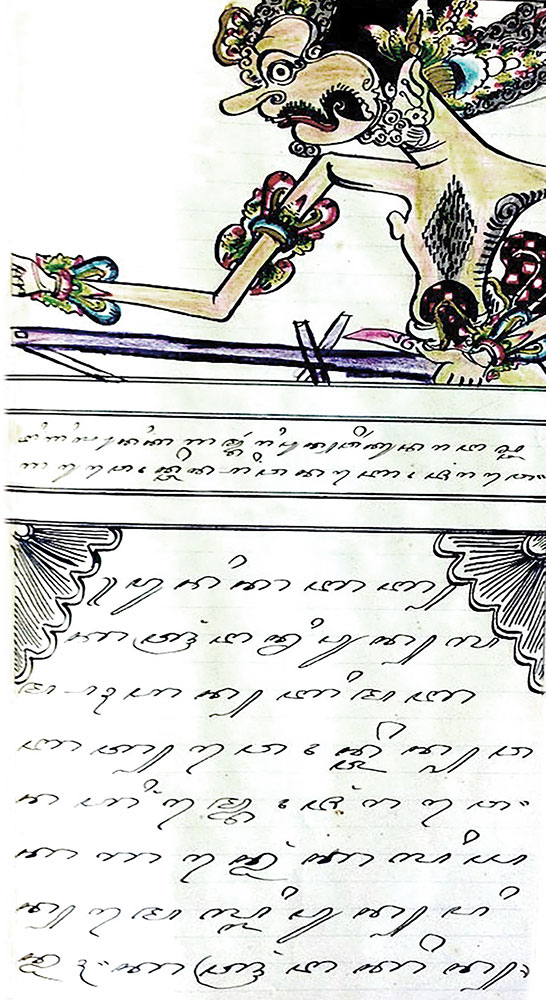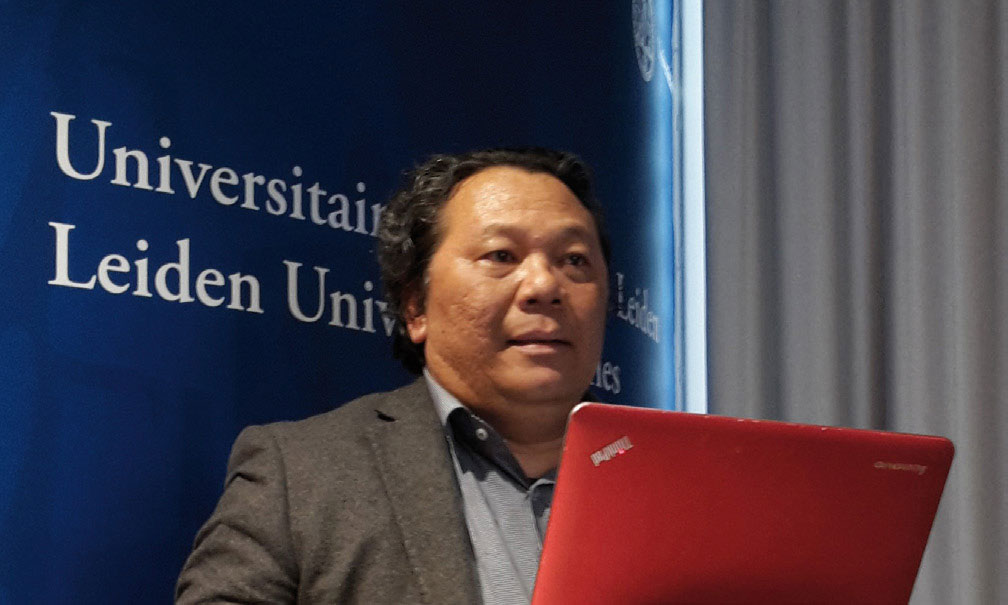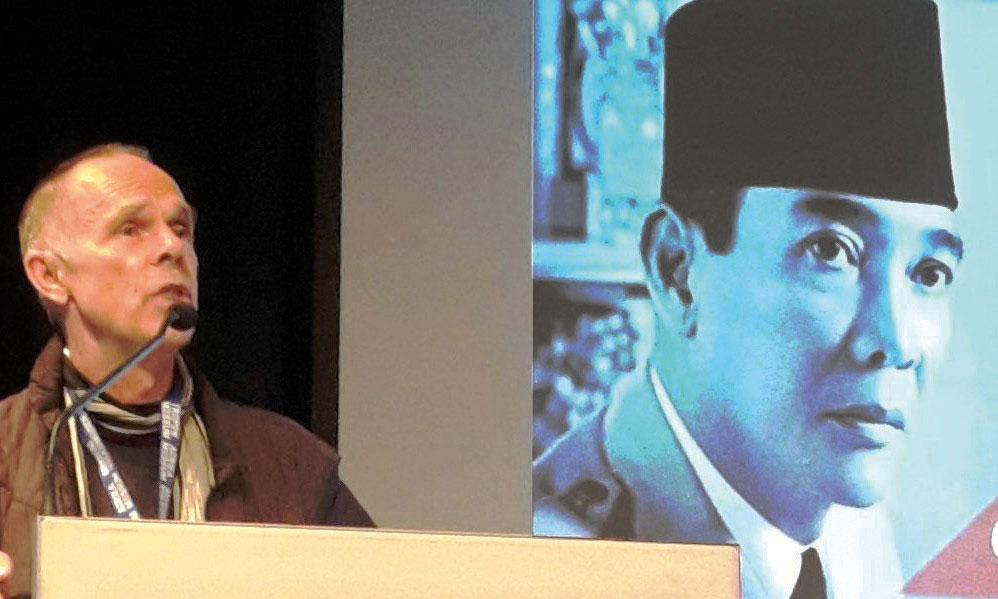Between stories and storytelling in the Indonesian archipelago
Symposium report
Interpreting the past
Indonesia’s past is a fascinatingly diverse yet vexingly imbalanced constellation of fragments. Some of the archipelago’s communities can look back to centuries of documented history, but in most regions archaeological and archival research is beset with difficulties. Traditions of storytelling, hence, tend to often be the only instruments available to interpret the historical experiences of local communities beyond the narrow lens of European colonialism.
How can traditional stories provide a better understanding of Indonesia’s past and present societies? This was the main question of the second Symposium on Stories and Storytelling in Indonesia (12-13 May 2017).1 Organised by Clara Brakel, Tom Hoogervorst and Nazarudin, this event was generously co-funded by Brill Publishers, the KITLV Learned Society, and the Embassy of Indonesia – the latter through sponsoring a delicious Indonesian lunch on both days. Two particular events prompted the organisation of this symposium: the Leiden Asia Year and the recent publication of a special edition on Indonesian storytelling by Wacana.2
The two-day symposium focused on a wide range of Indonesian storytelling traditions – including written stories, oral traditions, music and performances – with the specific aim to bring work on manuscripts in conversation with research on living traditions. The first day centred on an exhibition of archival material belonging to the Leiden University Library. The second day, which was both an academic and an outreach event, featured immersive audio-visual presentations and live performances. Participants were from the Netherlands and several Indonesian and European institutions.
Traditions preserved
Day one was opened by H.E. I Gusti Agung Wesaka Puja, the Indonesian Ambassador to the Netherlands. Drawing from his childhood in Bali, he highlighted the importance of storytelling traditions for his own life and for the Balinese people in general. Supported in his appeal by Prof. Ir. Bambang Hari Wibisono, Education and Cultural Attaché at the Indonesian Embassy, he called for more academic attention for this incessantly relevant topic.
The following presentation, by Victoria Clara van Groenendael, called attention to a key collection of Central Javanese wayang tales and objects, assembled in the early twentieth century by Ir. J.L. Moens and currently kept in Leiden. Garnished by colourful illustrations found in some of these manuscripts, the presentation concluded with a plea to continue and expand the preservation of paper-based archival collections. Juara Ginting provided an insider’s view on North Sumatran storytelling – interlaced with sung Karo poetry. Focusing on a unique, square-shaped tree-bark manuscript belonging to the KITLV collection, his presentation dealt with the 1935 inauguration of a local ruler known as Sibayak Lingga. Interestingly, it turned out that the colonial state – rather than an ancient local kingdom – was invoked to authorize his newly acquired position. Marije Plomp, subject librarian for South & Southeast Asian Studies, briefly introduced Leiden’s Asia Collections and conducted a tour through the new Asian Library. Several manuscripts relevant to the presentations of the symposium were put on display for the occasion.
Performances and society
The second day, which took place at the Volkenkunde Museum, pivoted around the close links between practices of storytelling and social or political institutions. Aone van Engelenhoven and Nazarudin demonstrated in the context of Kisar (Southwest Maluku) how local narrative histories can be studied in larger historical contexts, moving beyond the study of oral traditions simply for the sake of it. A similar case was made by Joachim Nieβ. Focusing on serialized stories in colonial-era newspapers, he argued that – beyond popular entertainment – storytelling in print served to familiarize readers with events and developments in the wider world.
Traditional storytelling practices often shape and renegotiate power relations. This point was eloquently expressed by Johann Angerler in his presentation on founding rituals in Sumatra and Java. In a similar vein, Bernard Arps established that the idea of someone “pulling the strings”, which originated in the traditional wayang theatre, is still very much alive in contemporary Indonesian politics. Indeed, theatre plays can profoundly influence perceptions of past and present events. Focusing on a recent performance of popular drama (kethoprak) in Yogyakarta, Els Bogaerts showed in riveting detail how changes in the plot of a story may reflect changing perspectives within society, and how attitudes towards a local hero’s personality can diverge across regions.
In Indonesia and elsewhere, storytelling traditions cannot be separated from music. In an audio-visual presentation on a genre of ritual storytelling (pantun) in West Java’s remote Baduy villages, Wim van Zanten discussed musical aspects of recitation on the basis of his own fieldwork data and a rare wax cylinder recording.3 His talk was followed by an enchanting live performance of classical Sundanese songs played in the Cianjuran style by the group Dangiang Parahiangan, in which he also participated himself. The second musical intermezzo was a lively performance of West Sumatran music and dance by the cultural ensemble Archipelago. Led by the musician Renadi Santoso, various gongs (talempong) and percussion instruments accompanied an energetic rantak dance performed by Rima and Yanti.
In the final session of day two, Clara Brakel-Papenhuyzen presented some of her own fieldwork data from North Sumatra, with a selection of audio-recordings of male and female storytellers from the Malay-speaking coastal areas. The symposium concluded with a visual presentation based on Clara’s earlier work on Dairi stories,4 which – as it turned out – had itself inspired new modes of storytelling performances. Marjolijn Groustra and Naomi Ploos van Amstel gave their artistic interpretations of some of these ancient North Sumatran legends, demonstrating first-hand how Indonesian stories continue to navigate between telling, singing, depicting, performing, writing and retelling.
Big in Indonesia…
The Symposium on Stories and Storytelling in Indonesia was organized in the spirit of re-appreciating the wealth of available resources in Leiden and beyond. A remark from a Dutch historian, quoted by Victoria Clara van Groenendael, struck the core of our sentiments on this subject:
Going against the trend that dictates that historians should increasingly prioritize big data and digital research methods, I would like to plea for continuous attention to the treasures of the past that are preserved on paper carriers, carefully stored in acid-free folders in climate-controlled safes. These paper archives, many of which will never be digitized because of the expenses, run the risk of disappearing from sight due to policymakers who encourage quick and efficient research in a dreamed-up digital utopia, in which the answers to research questions can be generated by pressing buttons.5
On the one hand, academic interest in Indonesian storytelling traditions is experiencing an unparalleled growth. On the other, knowledge of the relevant research materials, the antiquated languages in which they are written or sung, and ways to interpret them is quickly disappearing. The global academic climate, with its insistence on performative novelty and short-term / high-impact research initiatives, is unlikely to foster any profound change in the near future.
Nevertheless, the enormous interest this event has generated – including from representatives of the Indonesian Embassy, Leiden’s diverse community of Indonesianists, numerous volunteers, and a delegation of PhD students from the University of Indonesia led by Dr Pudentia M.P.S.S. – gives room for sincere hope. As a next step, we plan to attract funding for small-scale research projects on Indonesian audio-visual and manuscript collections, of which we are only scraping the surface. We further aim to invite a larger number of Indonesian speakers for the next symposium on this topic.
Clara Brakel, independent scholar (clara.brakel@gmail.com)
Tom Hoogervorst, KITLV (hoogervorst@kitlv.nl)



